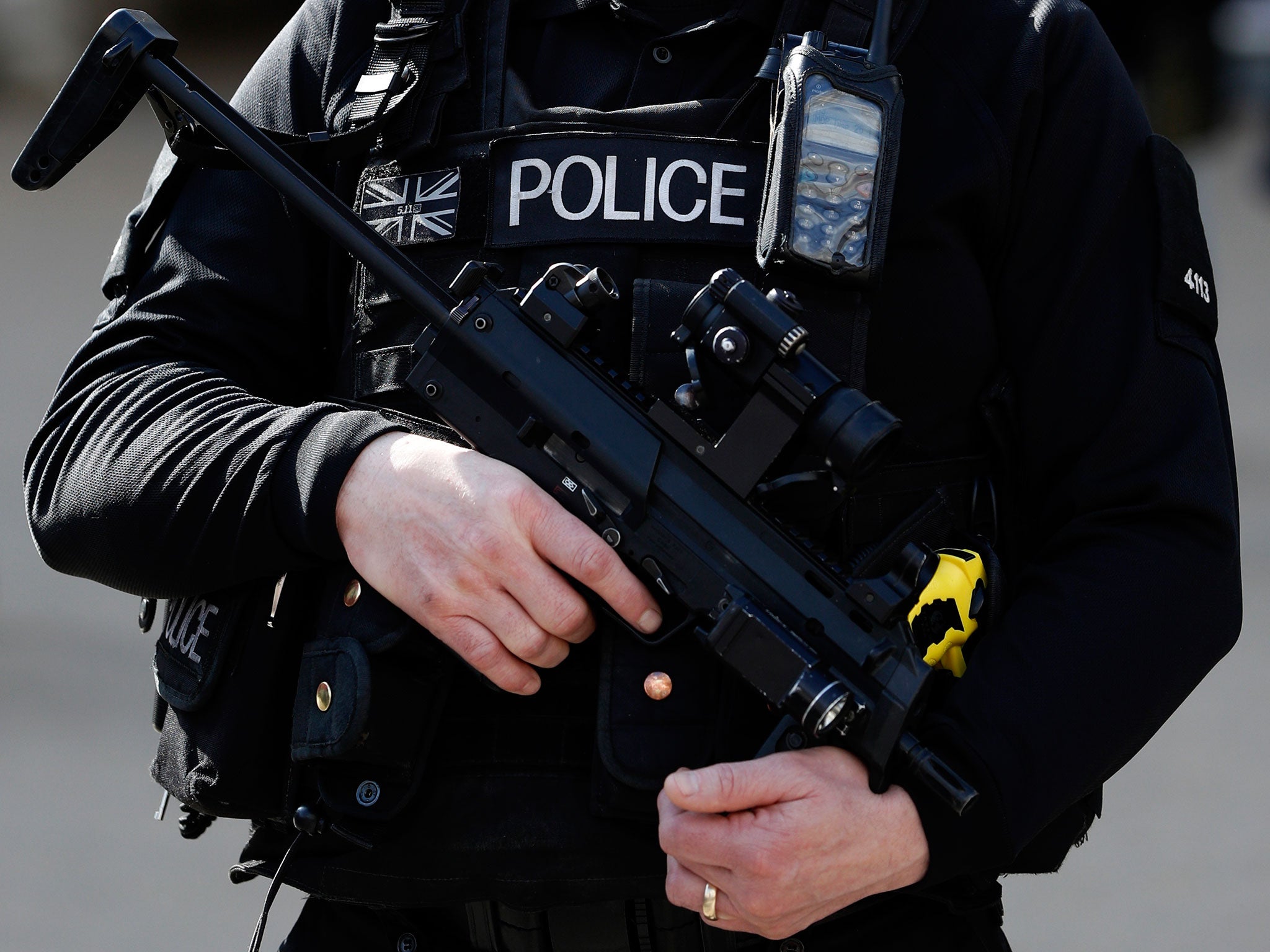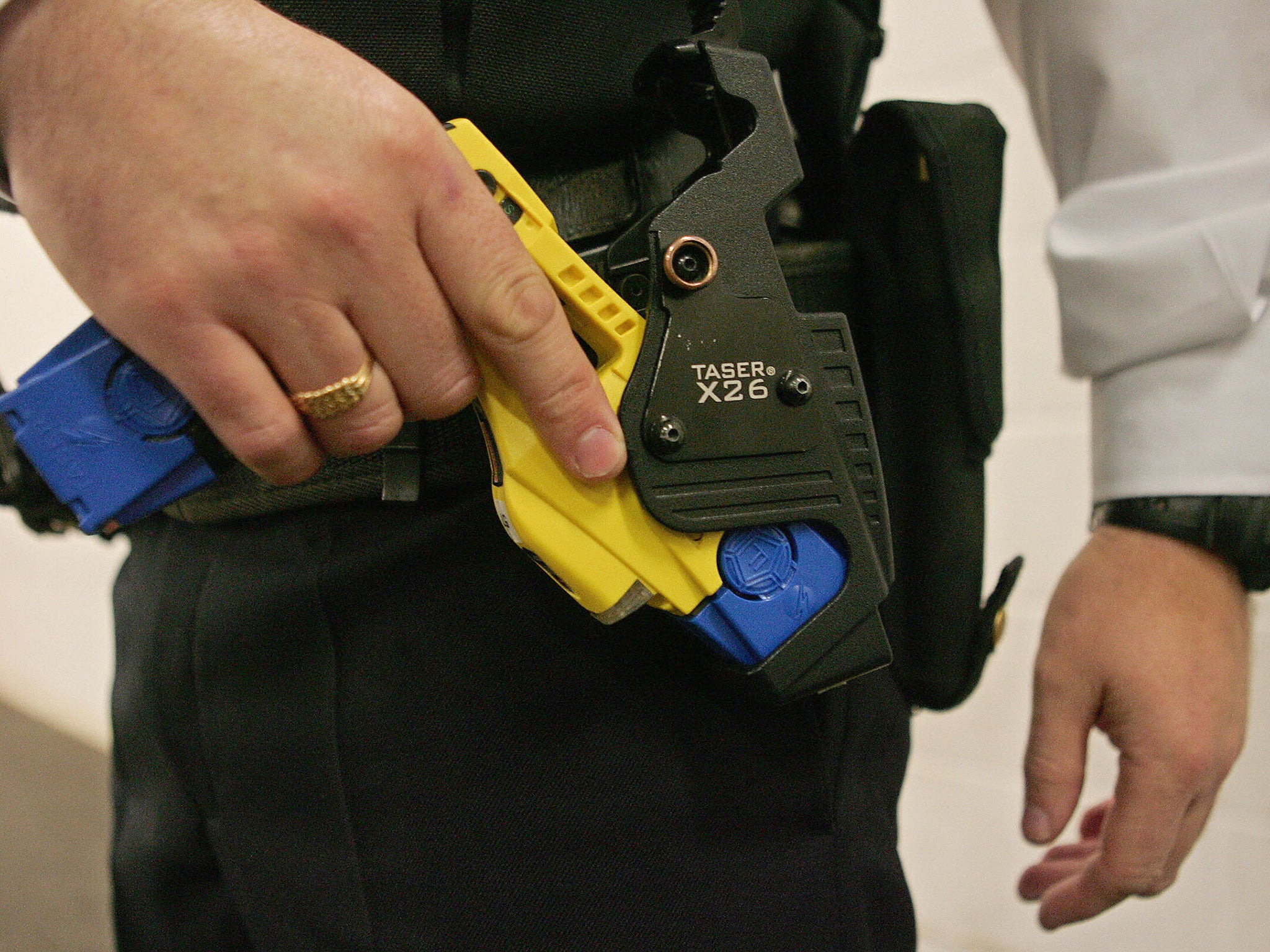Metropolitan Police use force disproportionately against black people in London, new statistics reveal
Figures show force ranging from handcuffs to guns used 12,600 times in three months

The Metropolitan Police used force more than 12,600 times in just three months, with a disproportionate amount of incidents involving black people, new statistics have revealed.
Data from Britain’s largest police force showed force of varying degrees was used 139 times a day in London on average, or once every 10 minutes.
Almost 11,000 of the recorded incidents (around 87 per cent) were against men, 1,600 (13 per cent) against women and 37 against people classified by the police as transgender.
The majority of people affected were white, at 45 per cent of incidents, while 36 per cent were black, and 10 per cent Asian.
The figures show that black people, making up around 13 per cent of London residents, are disproportionately more likely to be targets of police force, while white and Asian people are under-represented.
Diane Abbott, the Shadow Home Secretary, called the report “deeply troubling”.

“It cannot be right that black people and young black men in particular are so much more likely to have force used against them,” the Labour MP for Hackney and Stoke Newington told The Guardian.
“All police forces throughout the country must treat all communities equally, and with respect.”
Ms Abbott said she also “deplores the injuries to officers” revealed by the statistics, which included 643 incidents where officers were hurt during the same period.
Scotland Yard said almost 14 per cent of people involved were believed to have mental health issues, but provided no further breakdown.
It said the incidents counted ranged from taking hold of someone’s arm or handcuffing a “compliant” person to deploying a police dog or using a baton, CS spray, Taser or a gun.
Guns were trained on suspects 281 times, equating to roughly three times a day, but shots were only fired in two incidents, with one believed to be the London Bridge terror attack.
In another case, a baton round was used, while police fired Tasers 100 times, used CS gas 68 times and ordered a dog to bite someone 17 times.
Handcuffing a compliant person was the most reported tactic, accounting for almost 6,000 incidents, while records showed Tasers were used in only 11 per cent of cases where they were deployed.
A spokesperson for Scotland Yard said the figure demonstrated how effective the controversial weapons were “at defusing potentially volatile situations and reducing the need for further use of force techniques”.
The figures from between 1 April and 30 June were the first of their kind to be published following the Home Office Annual Data Review, with officers required to make a record of every time they use force.
Officers have been trained to fill in an online form after every incident, which will be moved on to a phone app in future to speed up the process, with resulting statistics published quarterly.
Commander Matt Twist said: “Our officers face the most dangerous situations every day. It is important we give them the right training and equipment to do the job.
“Use of force techniques are there to stop violence and danger, protecting not only the officer making an arrest but also the public at the scene, and the person being arrested.”
He hailed the new type of data collection as a positive step that would give senior Metropolitan Police officers an enhanced ability to scrutinise officers’ decisions and modify training, tactics and equipment.
“It will also ensure transparency to the public who will get a better idea of what officers face on a day-to-day basis,” Commander Twist added, stressing that the first three months of data could not be compared with any other figures.
“It will take time for us to ensure officers comply with filling out this form after every use of force interaction becomes routine or second nature.
“We know that there will be instances of force used in this period which have not been recorded, but having scrutinised the data, we have already seen a steady increase in online recording.”
Constabularies in England and Wales have been compiling the same data but not all have yet released the results.
The Metropolitan Police’s figures came amid tension over the deaths of two young black men in the capital.
Violent protests broke out in Hackney last weekend following the death of Rashan Charles, 20, after he was chased by police who were caught on CCTV restraining him on the floor of a shop.
The incident came just weeks after another black man, Edson Da Costa, died in contested circumstances after officers stopped the car he was travelling in in Beckton.
Figures released by the Independent Police Complaints Commission (IPCC) last week showed that fatal police shootings were at a record high in England and Wales last year, with six people killed in the 12 months to March.
The watchdog is investigating multiple complaints concerning police forces across the country, including an arrest on Sunday in Birmingham.
Three West Midlands Police constables have been removed from frontline duties after footage showed a baton being used to detain a suspect following a vehicle stop in what campaigners called an “excessive and disproportionate unjustified use of force”.
Footage posted on Sunday by police monitoring campaign group Netpol showed scuffles in a street in Aston, after a confrontation involving a plain-clothed officer and a man who was asked to move away.
